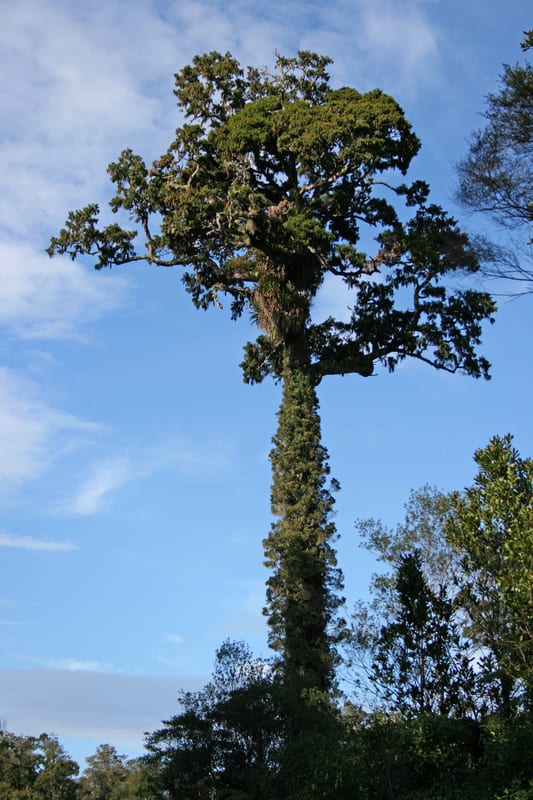
🌿 Morphology
🌞 Growing conditions
🌍 Origin and family
🌾 Uses
Warning: Despite the care taken in writing this sheet, it is essential to cross-reference sources before using or consuming any plant. When in doubt, consult a qualified professional
Permaculture uses
While not typically used for direct food production, Rimu wood is highly valued for construction and crafting due to its durability and beautiful grain. The tree provides shelter and habitat for native fauna, contributing to biodiversity in permaculture systems. Its slow growth makes it unsuitable for quick biomass production but ideal for long-term forestry planning.
Permapeople description
Dacrydium cupressinum, commonly known as rimu, is a large evergreen coniferous tree endemic to New Zealand.
Botanical description
Dacrydium cupressinum, commonly known as Rimu, is a large evergreen coniferous tree endemic to New Zealand. It typically grows to 20-40 meters in height, but can reach up to 50 meters. The leaves are spirally arranged, scale-like and awl-shaped, 4-7 mm long on young trees, and 1-2 mm long on mature trees. It is dioecious, with male and female cones on separate trees. The male cones are small and yellowish, while the female cones are modified into a fleshy red aril with a single seed. Rimu is a slow-growing tree, taking hundreds of years to reach maturity.
Companion planting
Rimu grows well with other native New Zealand plants such as ferns, shrubs, and other canopy trees. It benefits from the shelter and improved soil conditions provided by a diverse forest ecosystem. Avoid planting near aggressive, fast-growing species that could outcompete it for resources.
Propagation methods
Rimu can be propagated from seed, but germination rates are often low. Cuttings are also possible but can be challenging. Seedlings require moist, well-drained soil and protection from frost and strong winds.
History and traditions
The Māori people traditionally used Rimu for building houses, canoes, and carving objects. The inner bark was sometimes used for medicinal purposes, and the resin was used as a glue. European settlers also utilized Rimu extensively for timber, leading to significant deforestation in some areas. Today, sustainable forestry practices are in place to manage Rimu forests.
Usage calendar
Flowering occurs in spring (October-November). Seeds ripen in late summer and autumn (February-April). Planting is best done in autumn or spring. Pruning is not typically required.
